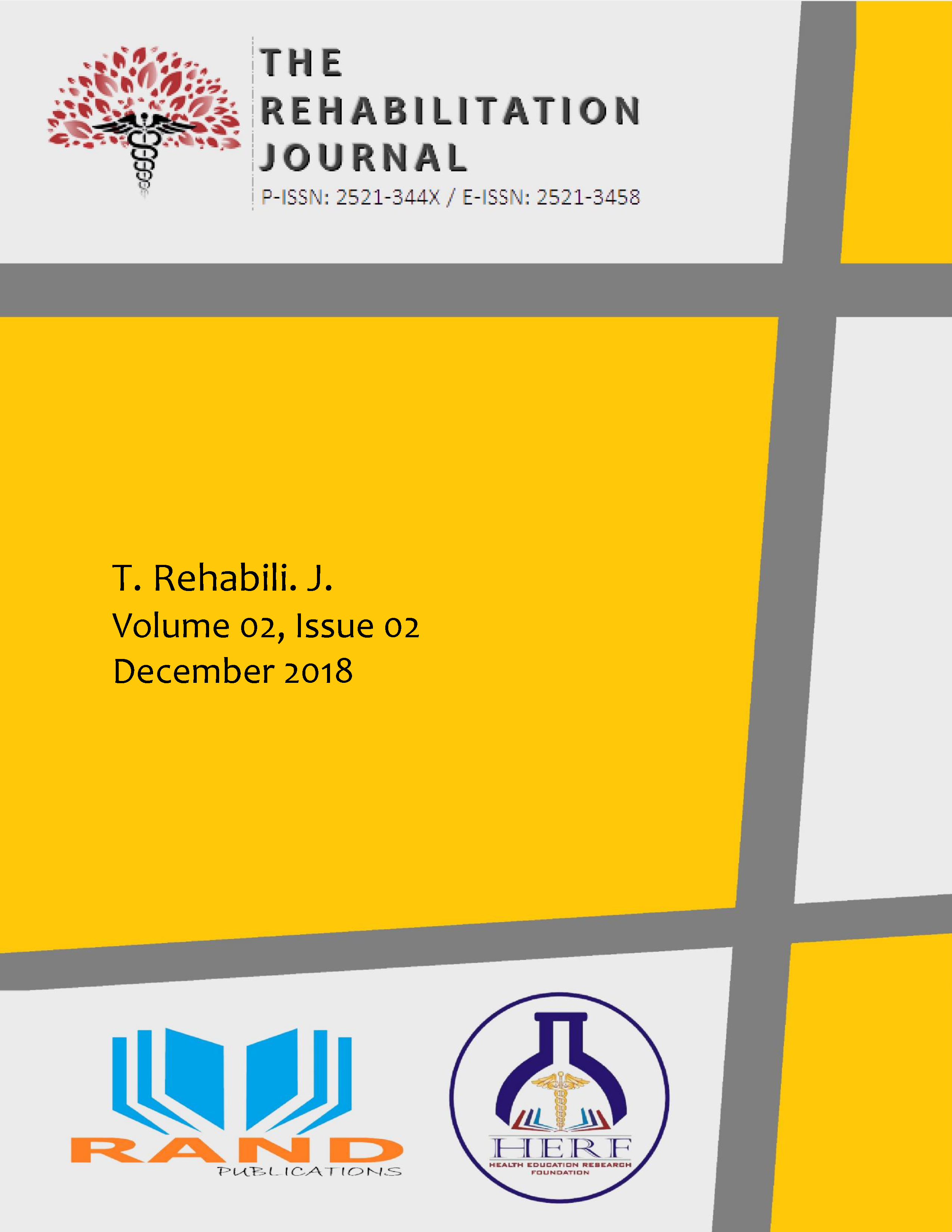STRETCHING EXERCISES VERSUS DEEP FRICTION MASSAGE FOR THE MANAGEMENT OF PIRIFORMIS SYNDROME
soi: 21-2017/re-trjvol02iss02p65
DOI:
https://doi.org/10.52567/trj.v2i02.29Abstract
Objective: to compare cross friction massage (CFM) and stretching exercise (SE) in decreasing pain and disability in patients with piriformis syndrome. Methods: A randomized controlled trial was conducted at Benazir Bhutto Hospital Rawalpindi for duration of 1 year (June 2017-18). Non probability convenience sampling technique was used for data collection. A total of n=47 participants between 20-60 years with +ve FAIR test with mild to moderate level of disability on Oswestry disability index (ODI) were included in the study. A total of n=47 were divided into two groups, CFM group (n=23) and SE group (n=24). The demographic data was collected in term of age, gender, height, weight, BMI, sitting and standing duration. Each participant was evaluated for symptoms of piriformis syndrome on Oswestry Disability Index (ODI). Paired samples t-test was used to analyze with-in group changes in both groups and independent t-test was use to compare the effects of both rehabilitation protocols. Results: The mean age of study participants in both groups was 37.62±8.97. Between-group changes showed significant difference in overall ODI of CFM group & SE group (7.08±2.74 ver. 13.27, p<0.001). But individual item of ODI including lifting (1.13±0.91 ver. 1.58±0.97, p=0.10), standing (1.08±1.23 ver. 1.50±1.31, p=0.27) and sleeping 0.65±0.93 ver. 1.20±1.21, p=0.08) did not showed significant difference in both groups. Conclusion: it is concluded that cross friction massage is more effective in reducing pain and improving functional abilities in patients with piriformis syndrome as compare to stretching exercises Keywords: friction massage, physical therapy, piriformis syndrome, stretching exercises, sciatica
Downloads
Published
Issue
Section
License
Copyright (c) 2018 Raheela Kanwal, Javeria Khan, Waqar Ahmed Awan, Rabnawaz Khan, Shomaila Malik

This work is licensed under a Creative Commons Attribution-NoDerivatives 4.0 International License.
Authors retain copyright and grant the journal right of first publication with the work simultaneously licensed under a Creative Commons Attribution (CC-BY) 4.0 License that allows others to share the work with an acknowledgment of the work’s authorship and initial publication in this journal.









